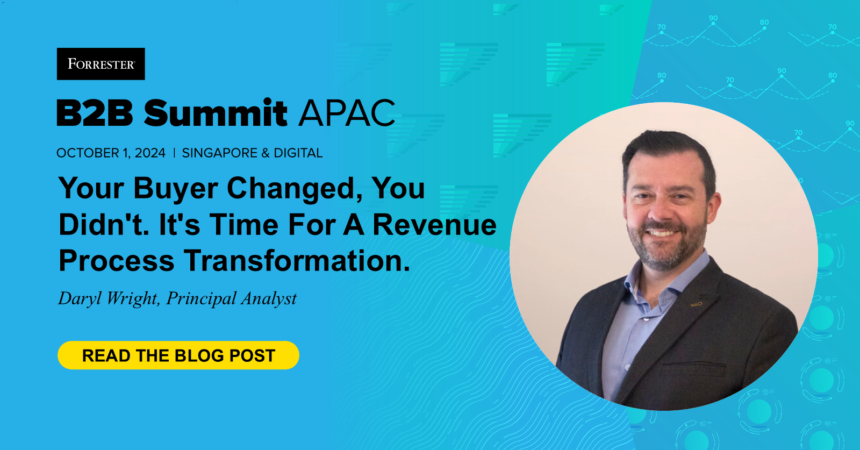What I’m going to tell you is something that you already know. It’s not a surprise, it’s not a secret, and it’s something that we in B2B marketing have known for many years – the buyer has changed.
We know that buyers buy in groups, we know that buyers are getting younger, we know they want to engage with us much later in the buying process, and we know that we have a gap between our old leads-based processes and what the customer is telling us that they want, and need, to buy from us. It’s time for a revenue process transformation.
To achieve this requires a transformation of the business through a change in focus so that your processes match the needs, behavior and journey of the buyer. To achieve a revenue process transformation, your revenue teams need to:
- Change the focus – develop an outside-in perspective. Shift from an internal focus to a customer-centric approach, using customer value as a revenue driver.
- Change the work – align resources to the new perspective. Redefine roles, processes, and technology to better serve customers and grow the business.
- Change the culture – evolve to a culture of lifecycle alignment. Foster a culture of experimentation, measurement, and delivering customer outcomes.
Aligning with customer needs
To truly transform, we must start with the customer and work backward. Buyers have higher expectations than ever before. Revenue process transformation puts the customer at the center of everything we do. It’s taking an outside in approach so that the customer drives every decision that we make. By doing so, we can better serve them and grow our business.
Transitioning to a life-cycle approach
The Forrester Opportunity Lifecycle is a framework that aligns and operationalizes connections between teams in the pre-sale, pipeline, and post-sale phases. This lifecycle ensures that marketing, sales, and customer success teams work together seamlessly, focusing on customer value throughout their entire journey. It recognizes that B2B buying decisions are made by groups, not individuals. Incorporating both digital and traditional buying signals, it helps us understand the entire buying group, their journey and how we can engage with it.
Adopting Cross-Functional Work Techniques
If buying groups are essential, so are selling groups. Cross-functional teams focused on customer value can drive better commercial outcomes. For example, a post-sale team might include an account manager, customer success manager, customer marketer, and sales engineer, all working together to deliver exceptional customer experiences.
The journey to revenue transformation is challenging, but necessary. By breaking old habits, embracing new frameworks, and focusing on customer value, we can transition our old processes and achieve sustainable growth. Let’s commit to this transformation and work together to create a brighter future for our businesses and our customers.
Join me at Forrester’s B2B Summit APAC on October 1 in Singapore as I outline a new vision for B2B revenue teams and processes.b







